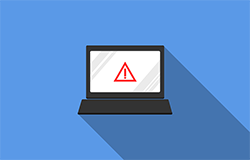 Working as an independent contractor rather than an employee is attractive for many reasons. There are a variety of benefits, but be aware of the risks, too.
Working as an independent contractor rather than an employee is attractive for many reasons. There are a variety of benefits, but be aware of the risks, too.
Benefits of Working as an Independent Contractor
Work for yourself.
As an independent contractor, you enjoy the freedom of being your own boss. Because you’re in charge of your career, you can choose which jobs you take, how much you charge and when you work. If you were an employee, you would have to follow your employer’s timeline and directions for every job.
Earn more.
Independent contractors can make more money than employees because they often receive a bigger cut of the project. This income boost happens because employers don’t have to pay for employee benefits, Workers’ Compensation or Social Security or unemployment taxes.
Pay lower income taxes.
Your tax bill could decrease as an independent contractor. Instead of paying federal and state taxes from each paycheck, you estimate your taxes and pay the IRS four times a year. You can keep your money longer and decide how much you pay, which could allow you to pay fewer taxes.
Enjoy more tax deductions.
Deduct reasonable and ordinary business-related expenses on your annual tax return, including:
- Office
- Travel
- Insurance
- Equipment
- Mileage
- Uniforms
- Trade conferences and magazines
- Entertainment and meals
Risks of Working Independent contractors
Experience reduced job security.
When you’re an independent contractor, you’re solely responsible for finding work. You won’t receive a paycheck simply for showing up at the office every day. You also work at the discretion of your clients. If they go through a slow period or decide to use a different contractor, you’re out of work.
Receive no employer-sponsored benefits.
Regular employees often receive a variety of benefits. However, you won’t receive health insurance, paid time off or matching retirement contributions. You also don’t receive unemployment or Workers’ Compensation, which could greatly affect your income if you don’t have work or are injured on the job.
Receive no labor law protection.
Federal and state laws give employees a variety of protections. You aren’t covered by those protections and could suffer exploitation or discrimination.
Risk not getting paid.
If a client decides not to pay you, you have little recourse outside of a lawsuit.
Buy all your equipment.
You’re responsible to provide whatever equipment you need for the job. That means you’ll have to buy or rent any tools you need and store them when the job is completed.
When you work as an independent contractor instead of an employee, you receive benefits and assume risks. Know what you’re getting into as you decide if you should be an independent contractor.














